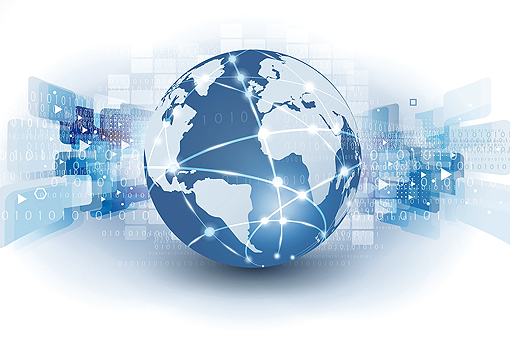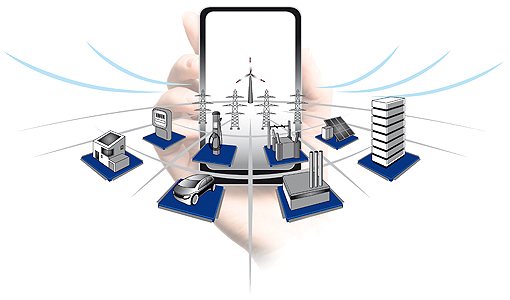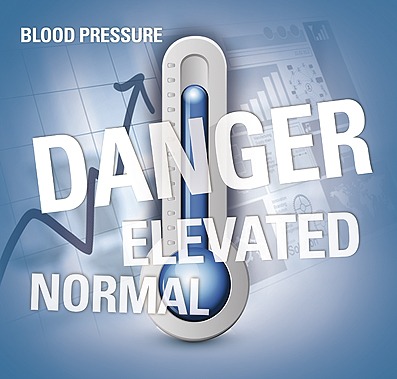“Internet of Things” was one of the biggest buzz words of 2014 however were the interconnected technologies it tries to describe really novel, or rather the evolution and expansion into new areas of existing programmes such as Smart Metering or Grid, Home Automation, Industry 4.0 and Intelligent Automotive Systems.
So how are the connected innovations these prior programmes initiated and proved finding their way into other market areas and what are the benefits and challenges to be overcome?
As we move into the new year of 2015 will the term “IOT” become stale and fade and will the progression of interconnection between embedded devices continue, without the headaches associated with the issues to realising tangible business opportunities being faced.

Author: Joachim Hüpper, Industrial & Communications Business Unit, Renesas Electronics Europe GmbH
How is IoT changing the world
There are one billion people on the internet today and Gartner predicts 26 billion devices will be online by 2020, a 30 fold increase from 2009. This presents a $300Billion incremental business opportunity to the ecosystem of suppliers to the embedded market and services providers for the connectivity and data management. There are many areas of where IoT connected embedded devices can bring real benefit and are currently being developed & deployed, some examples of these being:
Buildings
Smart Meter deployments have on going in many European countries with the EU mandate to have 80% of European homes using Smart Electricity and Gas meters by 2020. Most of these programs have a HAN (Home Area wireless Network) and WAN (Wide Area Network back to the supplier via the internet). This brings the possibility of meter connection to smart thermostat, boiler and radiator valves a close reality. British Gas in the UK have already released the HiVE app for controlling heating via a smart phone, with boiler and thermostat connected via Wi-Fi to router.
These is of course also the much publicized “Google Nest” connected learning thermostat which is being enhanced by the Google “works with Nest” programme , this would enable for example a Phillips Hue lighting system to flash the lights if the “Nest protest” sensor detects carbon monoxide.
The features of these early leaders may well become standard in years to come, providing greater control and energy saving which will be great for consumers and the environment.
Also in the built environment, printers have had the feature to prompt users for online ink cartridge replacement for many years. Home Appliances and AV equipment may extend this further being able to report fault codes back to the manufacturer or provider, initiating service calls or spares and consumables to be ordered. No more digging around in the back of the user guide for the fault finding table or searching for a spare part supplier.
Manufacturing
The next generation of interconnected manufacturing equipment has become known as “Industry 4.0” where intelligent factories, machines and products communicate with each other, cooperatively driving production. Companies such as Siemens are in advanced stages of research and development of these systems. Enhancing this further smart tags will provide connectivity of the ingredients required for the manufacturing process, giving asset management & materials tracing, reducing errors, providing improvements to “Just in Time” processes and reducing theft.
Environment
Connected sensors to detect environmental changes and report early warning for earthquake, avalanche, eruption & tsunami have existed for some years. Now there is the start of the installation of sensors and beacons in major towns and cities. Trials are already under at many sites including San Francisco airport and the city of Reading UK to aid the visually impaired navigate their environment via beacons that send audio announcements of where they are and what is close by to a headset. At San Francisco Airport when users walk past one of the 500 transmitter beacons, their iOS device will announce nearby points of interest; they can find flight gates, ATMs, information desks and power outlets without asking for help.
This could be projected further into the future with self-driving cars avoiding congestion and intelligently rerouting for optimal flow by receiving information from beacons en-route connected to a central traffic management system.
Advertising
With products like smart watches and the creation of sensor beacons, advertisers have started to realize the massive potential of all this data being collected, and how it can be used to reach consumers. The potential of target adverts being pushed to consumers smart devices as they pass by or browse within a store are not far off and have already been presented in the 2002 Tom Cruise film Minor Minority Report.
Retail
In a similar vain to manufacturing in the industrial sector, retail could also benefit greatly from internet connected products. Tesco in the UK generated almost 30,000 tons of food waste in the first six months of 2013. Industry-wide, 68 percent of salad sold in bags are thrown away . IoT offers the prospect of better tracking and management of food items to reduce wastage.
Healthcare
The recent explosion of home healthcare products such as blood pressure & heart rate, blood glucose & body mass index, lend themselves perfectly for evolution to connected devices which send the collected data to predict trends and send to services for analysis.
At the Consumer Electronics show this year Connected Health was centre stage.
Monitoring of body signals and activity using wristbands such as FitBit is now widely accepted and the launch of Apple Healthkit in iOS 8 will initiate many more connected monitors.

What are the new challenges that this evolution brings?
So behind the hype there is some reality today but for each of these application areas to become mainstream there are still many challenges. Five of these we will now consider.
Wireless
For distributed connectivity wireless is the most practical solution but there is massive fragmentation. Cellular technologies are well established but can’t provide a solution for battery or energy harvested devices such as sensors or beacons. There are no shortage of wireless standards in fact a mind numbing array: Wi-Fi, Wireless-Mbus, Bluetooth and IEE 802.15.4. Each of these may be a good candidate but many have sub standards and frequency or software stack options such as ZigBee, 6LowPAN,
Thread for ‘802.15.4, each with different stack versions and profiles, causing concerns for interoperability.
The Industrial Internet Consortium was founded to help resolve these problems and has a following of greater than 100 member companies, but results are yet to come.
Wireless solutions also need careful antenna design and optimisation plus certification to ensure compliance with the chosen wireless standard, both of which are complex fields and require specialist skills.
Security
Security is probably the greatest headache to most. Many IoT application areas could result in some financial transaction, so a lack of tight security would leave systems open to fraud and any linked to infrastructure could be a target for terrorism, for example energy or traffic management.
Many embedded development companies do not have the skill or expertise in house to ensure robust encryption and authentication so will need to reach out to external experts. For the end consumer, data protection will become a big topic, with remote sensors and beacons tracking our every movement and activity, ensuring that this data is kept private and the consumer feels they are in control, will be key for acceptance. A number of much simpler smart metering trials were aborted due to consumer pressure on this issue.
Big Data
A further challenge for the evolution of IoT will be what to do with all the data that results from the connected sensors. A years’ worth of UK smart metering data of ½ hourly gas and electric meter reads is approximately 3Tera bytes , which come from essentially just two connected sensors. Therefore professionally managed IT web server infrastructure will be required for collection, aggregation, analysis and presentation of the potentially massive amount of data created from IoT systems.
As well as collection data there is also the enablement of download or pushing data to the remotely connected devices. Careful design and testing will be required to support features such as remote firmware code module update, feature addition or deployment of apps in interpreted languages such as Java, python or other languages, including appropriate security features to ensure only authenticated updates are accepted.
Power source limitations
The next technical issue to be considered will be the power source for the end sensors. As most end devices in an IoT environment will not be mains supplied, consumers will reject them if constant battery replacement is required. As the quantity of end devices increases so must the battery life of each to avoid consumer inconvenience. If you consider that 24 devices with a battery like of 2 years each has the same replacement rate as 1 device with a battery life of a month. So efficient low power component choice, system design and battery less techniques such as energy harvesting will need to be embraced.
Use cases to be translated to business cases
Finally, ideas need to be translated into money. There will no doubt be many IoT products launched, but it will be ones with well thought out business case that will thrive. Interestingly as we will consider next, IoT will bring more possibilities for a positive revenue stream than simply the value of the physical device as has been in the past.

So how will this benefit embedded solution providers?
For embedded solution providers, the evolution of an internet connected world which IoT promises, opens up many opportunities and will probably be a disrupting influence in a number of application areas where slow moving dominant players may be displaced or lose market share by more dynamic innovative new entrants. Some examples of these opportunities are:
Differentiation & Innovation
Platforms and interconnect with sensors and actuators can allow differentiation from competitors or new entry to disrupt market areas currently serviced by others. A good example here is integrated home environmental control, where a supplier of security systems today could differentiate themselves by enabling security presence sensors to interact with lighting control or heating system providing energy management or vulnerable person monitoring. “Alertme” in the UK is a good example of this.
Offer new services
For consumers, new services that can increase customer satisfaction or create new revenue streams will appear. Data services, for collection, analysis and presentation of the information from IoT sensors and provide control of connected actuators. These services may be provided directly to the consumer or via other parties that produce “mash up’s” with added value of data from different sources. Think how google maps has been combined with house prices from property sales portals to produce heat maps of property values for an idea of what may come next.
For the developers of IoT products, sourcing proven platforms of software and hardware will be a key enabler, especially as many of the technologies required such as wireless and security are beyond the capabilities of existing equipment manufacturers and certainly start-ups. Communications modules are an easy option for quick addition of wireless technologies particularly whilst de-facto standards for IoT are very much in flux. Finally consultancy services will be very much in demand especially for security and communications technologies.
Increase or add value
Electronic products prices are continually reducing, whether its security systems, appliances or semiconductors. With the advent of IoT adding new innovative features to products that differentiate, will allow product prices to be maintained, whilst offering new services that make use of the collated data or provide control of connected actuators, allowing new revenue streams to be created.
Going forward companies have already identified that the model of revenue purely from hardware is being replaced by profit and value from solutions, software & services.
Conclusion
In this article we have shown that though there is a lot of hype around the term Internet of Things there is much reality today with immense opportunities for the future. However to fully realise the opportunities of internet connected devices will require new IT infrastructure, embedded technologies, software, standards & certifications that end equipment designers and manufacturers today have limited experience of.
A way forward to enable developers is for proven platforms combining wireless, security, and low power operation along with IT data infrastructure that are “production ready” with high quality software stacks, integrated, tested and qualified to required standards ■
www.renesas.com


